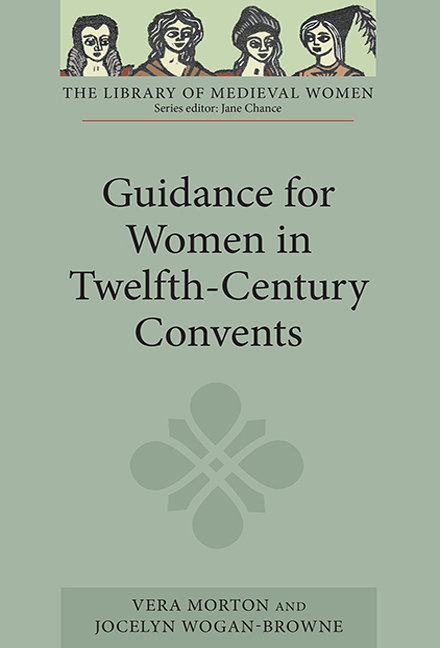Book contents
- Frontmatter
- Contents
- Preface
- Acknowledgements
- Abbreviations
- Introduction
- Note on Texts and Translations
- I Osbert of Clare, Prior of Westminster, to Adelidis, Abbess of Barking: A Thank-You Letter on Holy Widows, Virgin Fecundity and Precedents for Female Authority (Letter 42)
- II Abelard to Heloise: The History of Women's Roles in Christianity (Letter 7)
- III Peter the Venerable to his Nieces Margaret and Pontia: Of Nieces and Grandmothers and the Virgin Life at Marcigny (Letter 185)
- IV Osbert of Clare to his Nieces Margaret and Cecilia in Barking Abbey: Heavenly Rewards for Virgins in Barking (Letters 21 and 22)
- V Abelard to Heloise: On Educating Virgins (Letter 9)
- VI Goscelin of St Bertin: Lives of the Abbesses at Barking (Extracts)
- Interpretive Essay
- Bibliography
- Index
- Index
- Miscellaneous Endmatter
Interpretive Essay
Published online by Cambridge University Press: 29 April 2017
- Frontmatter
- Contents
- Preface
- Acknowledgements
- Abbreviations
- Introduction
- Note on Texts and Translations
- I Osbert of Clare, Prior of Westminster, to Adelidis, Abbess of Barking: A Thank-You Letter on Holy Widows, Virgin Fecundity and Precedents for Female Authority (Letter 42)
- II Abelard to Heloise: The History of Women's Roles in Christianity (Letter 7)
- III Peter the Venerable to his Nieces Margaret and Pontia: Of Nieces and Grandmothers and the Virgin Life at Marcigny (Letter 185)
- IV Osbert of Clare to his Nieces Margaret and Cecilia in Barking Abbey: Heavenly Rewards for Virgins in Barking (Letters 21 and 22)
- V Abelard to Heloise: On Educating Virgins (Letter 9)
- VI Goscelin of St Bertin: Lives of the Abbesses at Barking (Extracts)
- Interpretive Essay
- Bibliography
- Index
- Index
- Miscellaneous Endmatter
Summary
The nun, like the monk, is supposed to be ‘dead to the world’, and the letters and other texts in this book all have running through them various themes and preoccupations stemming from this idea. As one interpretive framework for the texts translated here, this essay focusses on the role of death in convent life, both for its gendered representation and for the relation of representation to the social and cultural practices of women religious.
In both medieval and later thought, anxiety that women religious should be strictly enclosed away from the world is much more strongly expressed than concern with monks and their claustration. Purity, as Mary Douglas long ago showed in a famous study, demands separation and apartness: nuns are readily seen as ‘requiring’ separation and containment in the liminal space beyond the cloister wall in order to be pure. Behind the wall, enclosed women are in a realm imagined as death-like in its purported disconnection from time and history. Here, according to the stereotype, where the nun is in but not of the world, she is dead to the world and hence in the grasp of death; she is contained in a cell which is both a womblike enclosure for her spirituality and the tomb of her life in this world.
Ideas of this kind were expressed in two places important for the image of medieval religious women in our culture. One is the literature and other arts of the eighteenth and nineteenth centuries where nuns were often represented not as citizens leading a communal and institutional mode of life, but through gothic and neo-gothic conventions of enclosure. The other is the letters, regulations and prescriptions of medieval bishops and other clerics, recommending and enforcing enclosure. Read literally these seemed to confirm gothic and romantic notions of the Middle Ages and to license lurid associations between nuns, enclosure, death, and sexuality. The construction of women as dead to the world has had implications for women's history, helping, for instance, to discourage investigation of the socio-economic and political aspects of nunnery history in much nineteenth- and twentieth-century scholarship.
The power with which notions of enclosure are advocated and imagined for women in religious lives has more to say of the wishes and fears of enclosure's advocates than of the actual lives of conventual women.
- Type
- Chapter
- Information
- Guidance for Women in Twelfth-Century Convents , pp. 157 - 180Publisher: Boydell & BrewerPrint publication year: 2003



